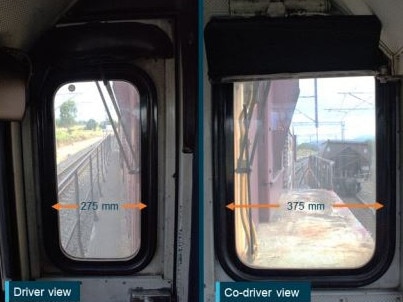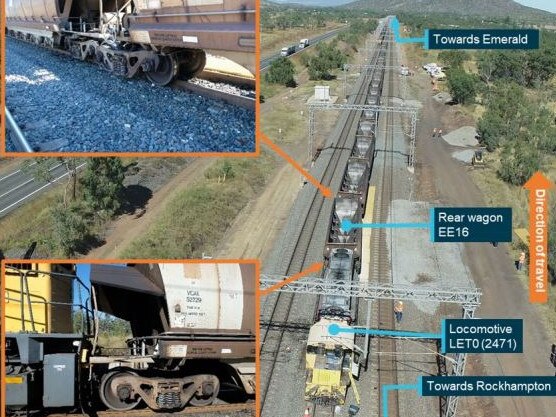17-second disaster: How the Westwood train collision unfolded
On the morning of June 18, three men boarded a Queensland Rail light engine in Rockhampton. They were headed to Bluff and back, and it was meant to be an educational trip. Only two of them returned.
Rockhampton
Don't miss out on the headlines from Rockhampton. Followed categories will be added to My News.
Seventeen seconds record the fatal train disaster at Westwood, near Rockhampton.
The Australian Transport Safety Bureau has released a preliminary report into the train collision that killed driver Chris O’Brien and injured two of his colleagues earlier this year.
On the morning of June 18, three men boarded a Queensland Rail light engine in Rockhampton.
They were headed to Bluff and back, and it was meant to be an educational trip: there was a tutor and two drivers receiving tuition, who split the roles of driver and co-driver that day.
The driver, Mr O’Brien, had been qualified for roughly four months, the co-driver for six.
The tutor had nine years of experience with another company and three with QR. He had qualified for the instructor position five years prior.
At 10.41am the crew of three rolled out of the Rockhampton yard.

For the first leg of the journey along the Aurizon-managed Blackwater system, the train was long end leading.
In other words, it was operated in reverse.
Such a configuration is usually used for specific manoeuvres, such as turning around or shunting wagons, and it obstructs “a significant amount of the forward view”, the ATSB says.
The driver of a train is responsible for his locomotive’s speed and for observing and obeying signals, and the co-driver helps him by observing, announcing, and confirming those same signals.
When long end leading, the ATSB says, the importance of co-drivers’ aid is heightened, and because their seats are rotated to face the opposite direction, they can “no longer reliably operate the emergency brake without moving from their seat”.

Between Rockhampton and Bluff there are two adjacent train tracks.
On this particular day, one of the tracks west of Westwood was closed for maintenance, so all traffic had to travel along the same line and make use of a passing loop at Westwood to allow passage from both directions.
By about 11am, a stationary Aurizon coal train consisting of three locomotives and 102 empty coal wagons was in the passing loop, intending on continuing west to Ensham Mine once it had the go-ahead.
A network control officer planned for the Bluff-bound light engine to enter the loop afterwards.
A yellow caution signal would be shown to the engine’s three occupants some distance before the loop, followed by a red stop signal further on, where the QR light engine would wait for the Aurizon coal train to move along.
The emergency that followed unfolded in less than 20 seconds.
11:25:42: The light engine begins its descent into Westwood yard.
11:25:43: A ‘signal passed at danger’ alarm goes off at Aurizon’s control centre as the train passes the red stop signal.
11:25:46: The locomotive enters the 50km/h turning track leading into the passing loop at 72km/h.
11:25:49: The NCO makes an emergency broadcast over the network radio. There is no response from the light engine crew.
11:25:53: A full brake is applied, but the train continues at 60km/h.
11:25:59: The light engine collides with the coal train at 44km/h, just before it enters the loop.

At 11.30, the light engine’s tutor driver attempted to call for help using the radio and then phoned the network control centre, which gave him first aid and CPR instructions.
Another Aurizon NCO then called the Queensland Ambulance Service, which arrived after half an hour.

Mr O’Brien, a father, husband and businessman from Margate, was killed.
The co-driver sustained serious injuries and was flown to Rockhampton Hospital; the tutor driver suffered minor injuries and was driven to hospital.
On June 21, QR suspended long end leading on its trains, except during specific circumstances – shunting or turning, for instance.
Four days later, the Office of the National Rail Safety Regulator required all operators to review the risks associated with long end leading by the end of July.
In August, the Australian Federated Union of Locomotive Employees called on QR to permanently ban the practice.
The ATSB’s complete findings are due in the second quarter of 2022.





